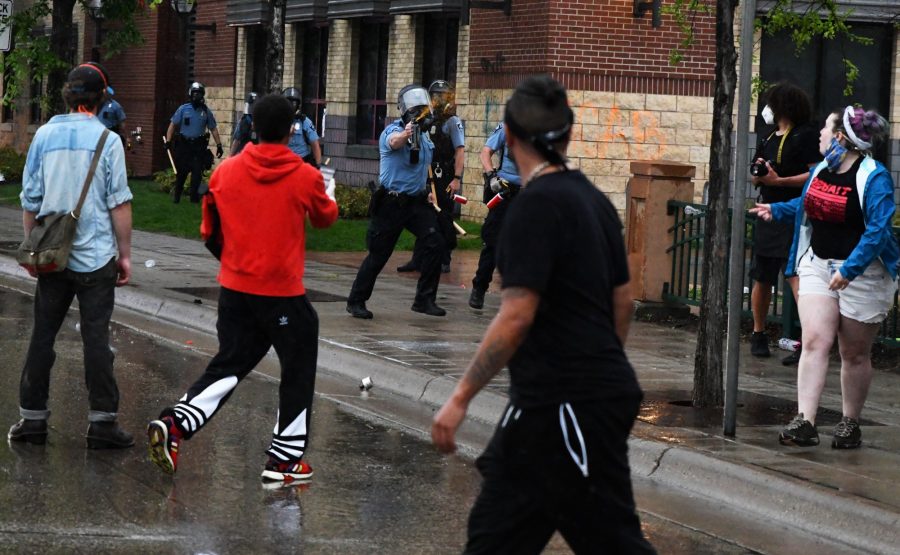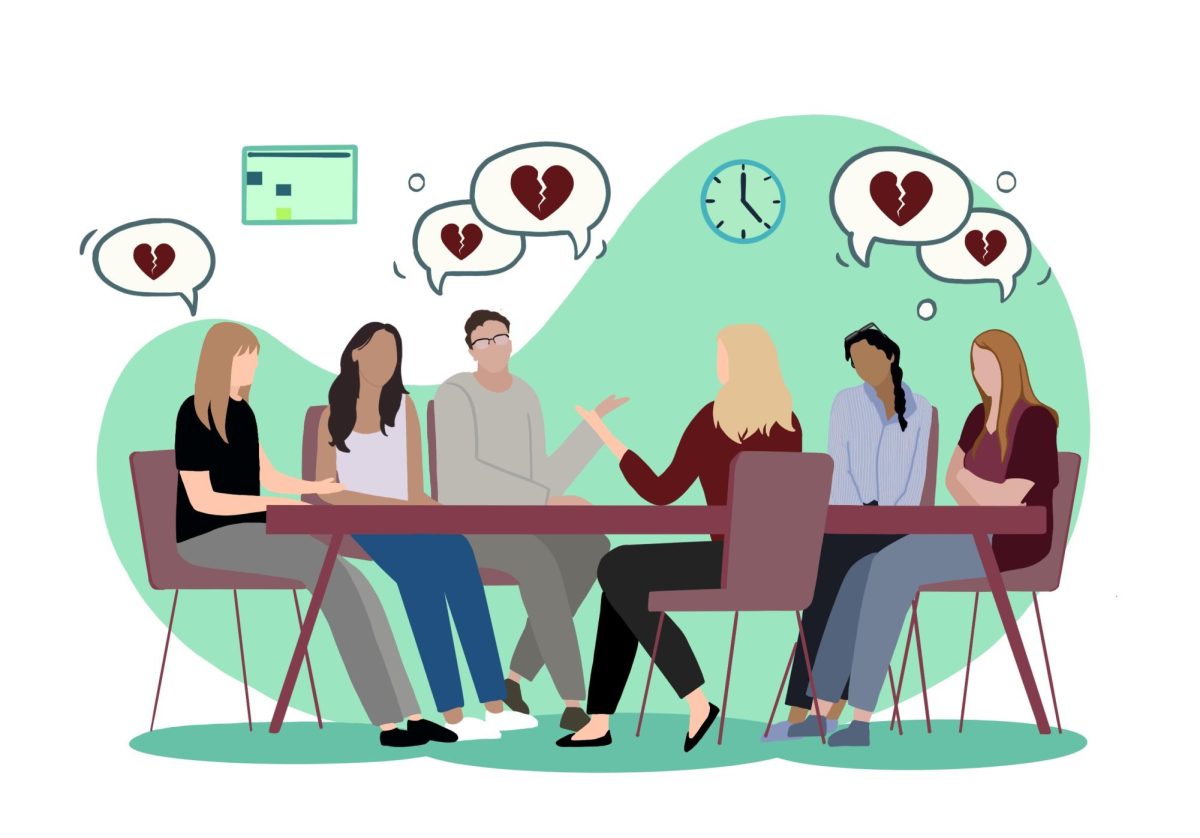It was simple.
The protests that came after the killing of George Floyd by four Minneapolis Police officers were an easy opportunity for the MPD and its leadership to demonstrate remorse or a sense of regret for what happened.
Unsurprisingly, the protests demonstrated that Minneapolis Police and its leadership were unable to restrain themselves from committing violence against civilians. Police Chief Medaria Arradondo expressed his apologies about Floyd’s death to the public and to Floyd’s family, but his department demonstrated that rank and file did not mean that apology in their conduct with protesters and journalists. Like with the deaths of Philando Castile, Justine Damond and many more, the violent police response to protests was an example of the culture of violence and brutality that characterizes policing in Minneapolis, especially toward African Americans, Indigenous individuals and other people of color.
“Public safety in Minneapolis can and should be done without so much wanton violence that kills and maims peaceful people in this city,” said Soren Stevenson, a recent graduate from the U’s Humphrey School who was hit by a less lethal projectile shot by MPD. “George Floyd is accused of using a $20 counterfeit bill, and he died for it. I was standing there peacefully protesting, and I lost my left eye and sense of smell for it.”
Stevenson is one of at least four peaceful protesters and journalists who have been permanently disfigured or maimed by “less lethal” projectiles shot by law enforcement in Minneapolis. Dozens more demonstrators and journalists have been injured by police rounds, tear gas or other uses of force. According to the city’s Office of Police Conduct Review, the board is now investigating over 400 complaints against MPD, more than annual complaint totals of previous years. However, the office has only disciplined officers in 3% of cases since 2012.
The killing of George Floyd proved that MPD and its toxic culture are beyond redemption, and MPD’s subsequent reaction to the protests only proved that further — at a very real human cost that should not be ignored by the public and politicians who govern MPD.
Violence toward protesters from the beginning
The MPD reaction to peaceful protests was aggressive from the very first night, on May 26, when crowds peacefully marched from the site at which Floyd was killed at 38th Street and Chicago.
They continued to the 3rd Precinct, and there the crowds surrounded the building in protest. Police officers in riot gear stood in front and on top of the building. As it started to get darker, a few protesters broke through into the parking lot where they vandalized police cars.
“You can see in the footage of that, and you can see that nobody [the police] is intervening in any way,” said Dave Bicking, a board member of Communities United Against Police Brutality. ”Instead, all the action from the cops was out on Lake Street against people who were just milling around on Lake Street. You know, literally thousands of people.”
The crowd in front had remained peaceful, but police shot tear gas and less lethal projectiles into the mass of protesters, escalating the situation.
“There were protesters who were throwing things at police,” said Jared Goyette, a freelance journalist who has written for publications like the Washington Post and the Guardian. “But it seemed like their response to that was to not just target the people that were throwing things but to ramp up their targeting of everyone.”
The police on top of the precinct building continued steadily and arbitrarily to fire less lethal projectiles into the crowd that Goyette was in.
A young Somali man peacefully protesting near Goyette was severely wounded after being hit in the head by a less lethal round. Goyette watched him shake on the ground as other protesters tried to call 911 and police fired tear gas at their group. Then, when Goyette walked away from the crowd to call his daughter, he was hit in the eye by a less lethal projectile.
“It was unlike anything else I experienced because it wasn’t like I got here and then fell. It was like, I’m standing. Wait, I’m not standing.”
Someone helped Goyette up, but soon tear gas came their way, so he stumbled out of the protest using his one functional eye.
Unchecked violence
Goyette ultimately recovered vision in his eye after receiving medical treatment, but other protesters and journalists will live with the consequences of police violence forever.
On May 28, 17-year-old Sharon Morara was shot in the face with a less lethal projectile while peacefully protesting at the 3rd Precinct. She was rushed to a hospital then waited until a 4 a.m. hospital transfer to be treated. She is raising money on GoFundMe to pay for plastic surgery to fix her lip.
On the same day, college student Ethan Marks was hit in the face by a tear gas projectile while helping at a cleanup. He was permanently blinded in his right eye. He too is raising money on GoFundMe to pay for future surgeries.
On May 30, police ignored the press credentials around freelance journalist Linda Tirado’s neck then shot her first with a “ballistic tracking round” before blinding her left eye with a foam bullet that shattered her safety glasses.
Just one day after Tirado was hit, the police shot another peaceful protester in the face with a less lethal projectile. University graduate Soren Stevenson was in a crowd of protesters on the Interstate 35W ramps near the University Avenue bridge after a semi had driven into a crowd of protesters half an hour earlier. On the I-35W stretch over the Mississippi, police had used tear gas to push remaining protesters off the bridge.
Stevenson wasn’t in the crowd on the ramp for very long before he was hurt. The protest had been entirely peaceful since the moment it began hours earlier at US Bank Stadium — no one had thrown rocks or bottles at police, and the protesters Stevenson was with were at least 30 feet from police.
“In that specific moment I was looking up into my right, and a flashbang just exploded,” Stevenson described. “And then I was hit.”
Stevenson keeled over and grabbed his face. “When I reached up with my hand and touched my face, my whole left side of my face was soft, you know, as opposed to having, like, bony ridges.” He could not see out an eye.
He ran into the crowd, where he was helped by student nurses. They then ran farther away together as police fired tear gas into the peaceful protest. The nurses washed the blood from his face and bandaged his face before driving him to the hospital.
That night and in the following weeks, Stevenson underwent numerous surgeries, reconstructing his “exploded” eye, fixing broken and displaced bones and putting his nose back where it had been. According to his GoFundMe page, he is now blind in his left eye and uses a prosthetic as he waits to get his glass eye in August. He faces a lifetime of CT scans to inspect his facial tissue.
For Goyette, the police’s actions appeared to be part of a larger pattern of targeting journalists. A Vice journalist was pepper-sprayed in the face as he lay down on the ground, while a Black Latino CNN reporter was arrested on live TV for covering the protests because the Minnesota State Patrol did not believe he was a journalist.
“The police chief has apologized in a broad sense to journalists targeted, but I don’t feel like there was any accountability for that — like officers that we know were publicly disciplined,” said Goyette.
Stevenson, Goyette and Tirado have all taken to the courts to address the brutality they experienced. Stevenson and Tirado are both individually suing, and Goyette is lead plaintiff of an ACLU class-action lawsuit alleging that the city and state targeted and attacked journalists during the protests.
These are lawsuits that the taxpayers of Minneapolis will have to pay for as a result of the irreparable culture at MPD. It’s obvious that the Minneapolis police, before or after Floyd’s death, don’t follow the rule of law or respect life. The people of Minneapolis have paid the consequences of that time and time again.








